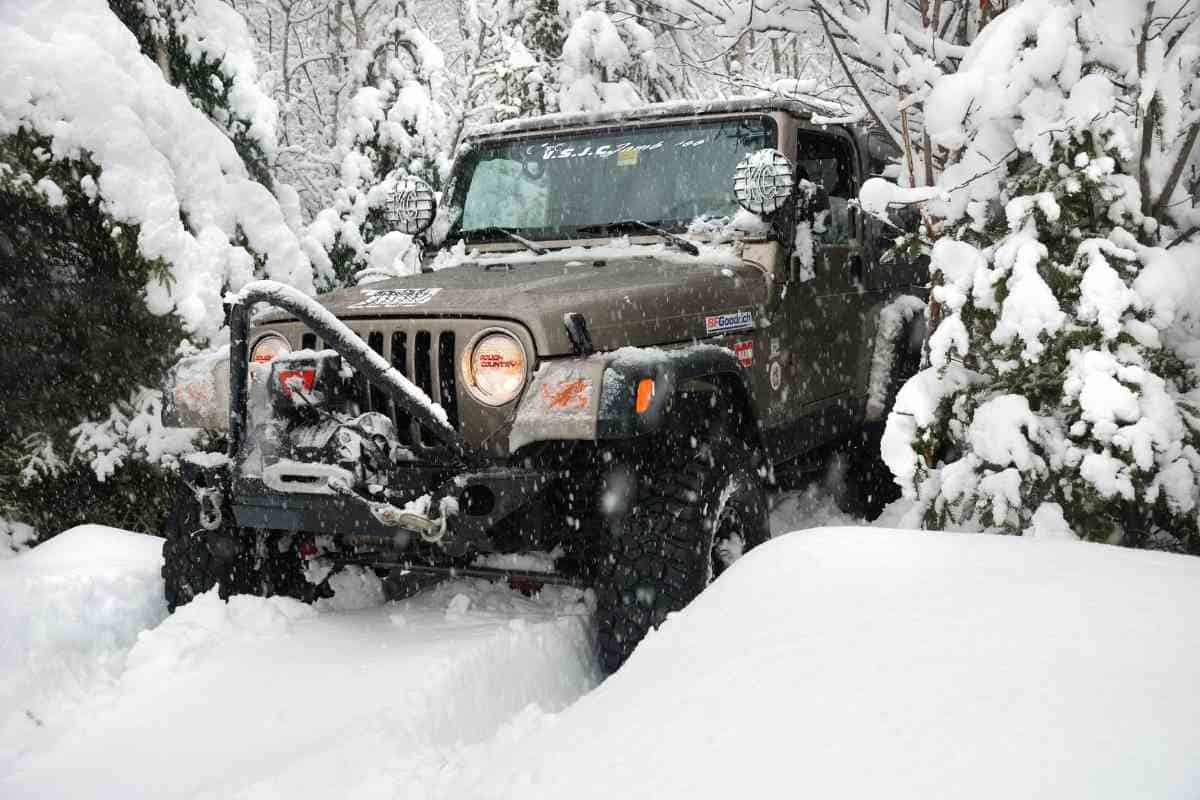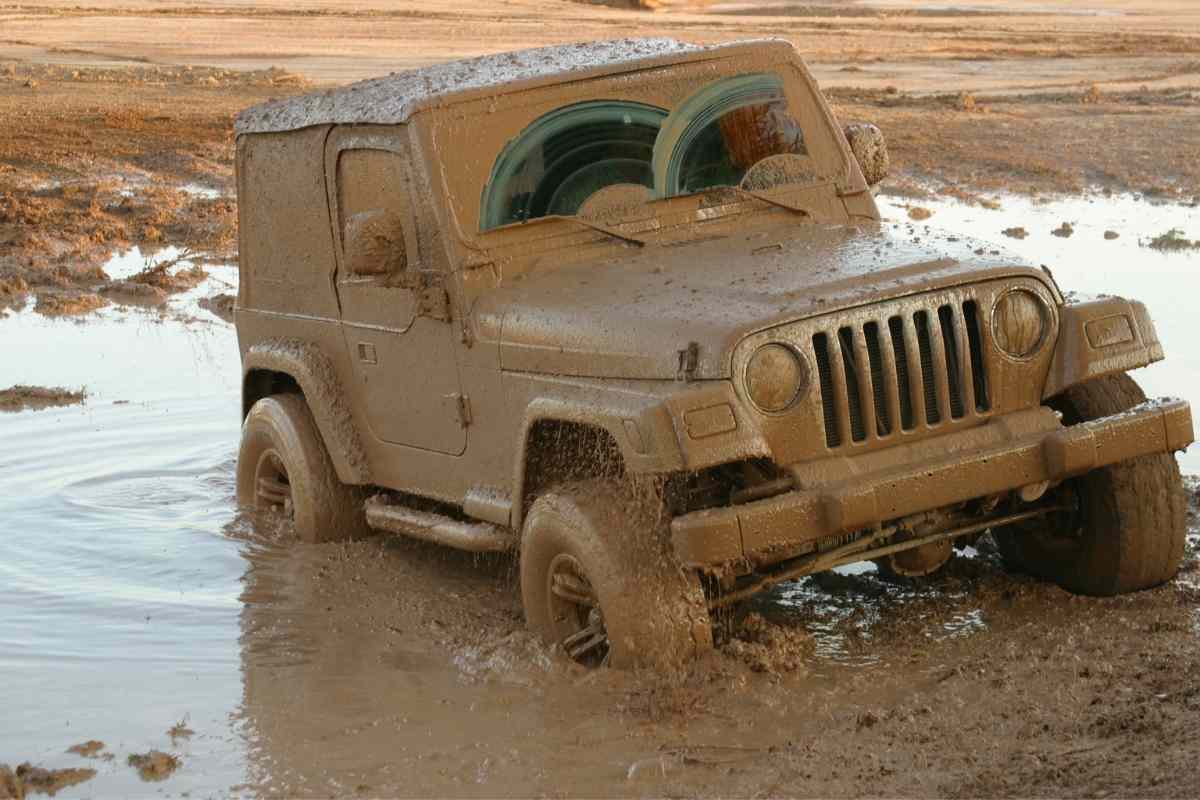Which Year Was the Best Jeep TJ Built? (1997-2006)
We love the Jeep TJ here at Four Wheel Trends, so we wanted to answer one critical question: which is the best Jeep TJ year? This article will highlight the standout model year of this iconic series.
Join us as we identify the TJ year that best combines reliability, performance, and off-road prowess.

The Jeep Wrangler TJ was a real game-changer in the adventure SUV market.
The TJ era started in 1997 and ended in 2006. In that time, Jeep Wranglers went from being simple, rugged, no-frills trail eaters to modernized vehicles with all the comforts for the road while retaining the traits of an offroad specialist.
A few Wrangler TJ models stand out more than others, but the final decision is simple. My vote has to go to the Rubicon, specifically the first model in 2003.
This Wrangler was an instant success that propelled the Jeep Wrangler into the future and the modern era with redesigned and modernized features.
When the second generation launched in 1997, the Wrangler still resembled the old CJ and YJ lines that preceded the Wrangler TJ era.
The engines, drivetrains, and axles resembled each other. Many people argue that the early years of the TJ line are a continuation of the YJ line with a few modified parts.
Why Is the Rubicon the Best Jeep TJ?
The introduction of the Jeep Rubicon, in 2003, marked a new era as it brought meaningful changes. It was so revolutionary that I had to consider it the best Jeep TJ.
This redesigned TJ model was so ahead of its time that the SUV is still highly sought after by collectors and enthusiasts. Most Jeep aficionados agree the 2003 to 2004 Rubicon was the best the TJ era had to offer.
What Made the Rubicon Different And Why Is It THe Best Jeep TJ?
The Rubicon had Dana 44 axles, air-actuated Tru-Lok front, and rear lockers, Rock-Trac 4×4 system, 31 in. MT/R offroad tires made by Goodyear, diamond-plate rock rails, and four-wheel disc brakes. If that isn’t enough for you, I don’t know what is.
The Rubicon is a dedicated rock crawler that derived its name from the famous California rocky trail. This Wrangler is not the best model because it can handle a challenging track. Jeep also installed a new transmission with a 4:1 power ratio.
Why the Rubicon Was Almost Never Built
The Rubicons were so unique that they almost never came into existence. Everything crucial required a rare part, parts Jeep did not have ready to install.
A large manufacturer like Jeep has to provide quality, keep costs down, and know that a company can provide thousands of units in a short period.
One of the major challenges to building the Rubicon was that not many of the designers at Jeep were offroading enthusiasts. They had to consult outside help to understand what a special offroader like the Rubicon needed to do.
When they began planning the project, Jeep designers had no idea that a large community of outdoor enthusiasts was willing to spend thousands of dollars to outfit an offroad vehicle with upgrades.
Once the design team knew what they needed, where to get parts from, etc., they had to get the green light from executives who looked at builds in terms of costs versus benefits, not the best Jeep possible to please enthusiasts.
A Tough Sell
Delivering the vehicle that would become the Rubicon to market could never happen in a boardroom with concept PowerPoint pictures. The proof needed to be in the pudding, as they say. The team had to build this Wrangler first and sell its performance.
The opportunity came in 1999 at an executive retreat to the Rubicon trail in California, where they learned firsthand why people love Jeeps.
Wrangler TJs were already in demand on the trail because everyone commented that the ride felt much better. So, the design team slipped in a TJ modified with a 4:1 transmission. The next year they added ARB Air Lockers to provide more torque by locking the axle.
With that final modification in place, executives were practically fighting to see who would get to ride in the Rubicon prototype.
Without this multi-year innovative approach to showing the executives what kind of Wrangler they should build, the Rubicon likely would have never existed.
The Executives Were Only the Beginning
After showing not telling, the Rubicon finally moved toward design and production. The design team took prototypes to different trails and literally beat them to death to assess what failed and why and what to do about the design to improve the Rubicon.
Maintaining funding for the special parts was a struggle as well. Questions such as, “Why does it have to have a 4:1 transmission?” plagued the design team.
Designers knew exactly why a cost analysis targeted parts such as the transmission. The part was expensive to make and had no other applications.
Every time they had to defend a part, designers took an executive to the proving ground, put them in a prototype Rubicon, and showed them why the build needed the part.
Executives finally had to accept that the Rubicon was a specialized Jeep for a large market of enthusiasts who would happily pay the sticker price. The company could not cut corners.
The Rest is History
The decision paid off. Before the Rubicon was ready for production, pre-orders flooded in, and Jeep could barely keep up. The Rubicon had repeatedly taught the executives that they had lightning in a bottle, and if they built a custom Jeep, the offroad market would pay up.
The rest is history, and the Rubicon is still a top seller, along with several other specialized Jeep models. That’s why it’s the best Jeep TJ in the market.

What Was the Biggest Wrangler Flaw TJs Fixed?
Unfortunately, Jeep had to correct a major mistake in the design of the Wrangler—the leaf spring suspension. People still loved the Wranglers of the former YJ era, but Jeep knew the outdated suspension system had to go.
Whereas the Rubicon was the best Jeep TJ, the YJ will live in history as one with primitive suspension. This was a hinderance that buyers didn’t want anymore.
What Was Wrong With the Leaf Spring Suspension?
Leaf spring suspensions work well for their intended purposes, helping large, heavy vehicles haul weight. Jeep has always designed Wranglers for offroad use and aimed to please adventure seekers.
In offroad driving, the suspension needs to allow the tires to independently raise and lower while driving over rocky terrain and other forms of uneven ground.
Leaf springs are rigid and do not let the tires react correctly. Offroad vehicles need coil springs or another type of spring system that allows each tire to react independently.
How Jeep made a blunder that made the Wrangler an uncomfortable offroad SUV is a mystery. Jeep either did not understand what offroad enthusiasts like, or they made a costly financial decision to save money upfront. The decision made consumers lose confidence.
The result was that from 1987 to 1997, when the YJ line came out, people who bought Wranglers either had to suffer stiff, bumpy trail rides on the wrong kind of suspension or replace the leaf springs with aftermarket parts, probably coil springs.
Jeep introduced the new Quadra-Coil suspension system starting with the TJ line in 1997. This upgrade righted a decade-long poor design decision that saw a supposedly offroad powerhouse get a suspension more suited to driving on paved roads and hauling loads.
What Made Early TJs and YJs Similar?
The TJs resemble the previous two generations in aesthetic and mechanical ways. Visually, the TJ line looks more like the CJ line from two generations prior. The round headlights replaced the YJ’s square headlights, receiving much applause from Jeep fans.
The YJ and TJ Wranglers resemble each other under the hood and in performance. Although, the TJ performed better due to fixing design flaws like leaf springs and replacing them with coil springs.
The updated springs also meant the new Wranglers did not deliver such a bumpy, painful ride over rough terrain. This is essential and a reason why the TJ is excellent, and the Rubicon is the best Jeep TJ out there.
Closing Thoughts On The Best Jeep TJ
To summarize our article on the best Jeep TJ, the standout model year is undoubtedly the 2003 Rubicon. It was revolutionary for its time, incorporating significant enhancements that set a new standard for the Jeep Wrangler series.
It’s not just about its capability as a rock crawler; the Rubicon represented a leap into modernity for the TJ lineup. I personally love its features: Dana 44 axles, Tru-Lok lockers, and a Rock-Trac 4×4 system.
These make it the best Jeep TJ for enthusiasts and collectors alike. Its blend of ruggedness and advanced technology captured the essence of what a Jeep Wrangler should be, earning it top honors in the TJ series.
Lastly, the journey of the Rubicon from concept to reality highlights the importance of understanding the market’s needs and daring to innovate. The initial skepticism within Jeep about the viability of such a specialized model gave way to success, demonstrating the value of catering to a passionate community of off-road enthusiasts
